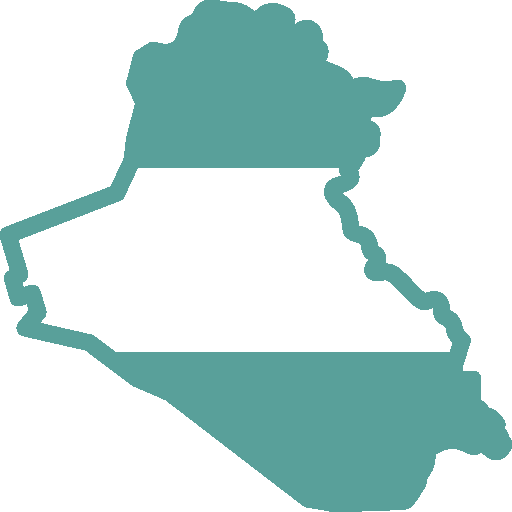
Online casinos in Iraq have become increasingly popular, despite the presence of land-based casinos. This rise in popularity is mainly due to convenience of access and the wide range of benefits these sites offer, which continue to attract local players.
In this guide, we’ll share our list of the best online casinos for Iraqi players. We’ll also explain the key criteria we use to evaluate these sites, highlight the types of bonuses you should look out for and how to claim them, introduce the most popular casino games, and outline the most reliable payment methods—both local and international—available to players in Iraq.
Finally, we’ll cover the legal situation of online casinos in Iraq and show you how to access these sites safely using a VPN.
Our Top Picks for the Best Online Casinos in Iraq
10 Key Criteria We Use to Evaluate Online Casinos in Iraq
When IraqBet puts together a list of the best online casinos for Iraqi players, it’s not based on random choices. Each site is carefully reviewed against strict standards before being added to our recommendations list.
Licensing and Security
Every casino we feature holds a license from reputable regulatory bodies, such as those in Curaçao, Gibraltar, or Malta. A licensed casino is accountable to its regulator, required to submit regular reports, use certified random number generators, and provide strong safeguards for player data and fair play.
Acceptance of Iraqi Players
Naturally, we only recommend casinos that accept players from Iraq. While some major international brands, such as Betway, may have a solid reputation, they do not accept registrations from Iraq. Our list focuses only on trusted sites that welcome local players.
Generous Bonuses with Fair Requirements
Bonuses should be valuable, but not misleading. A $3,000 bonus means little if the wagering requirements are unrealistic. That’s why we prioritize casinos that offer fair and balanced promotions for both casino games and sports betting—bonuses that are generous yet achievable.
Flexible Payment Options
Depositing from Iraq can sometimes be challenging, so we only recommend casinos that offer a wide range of payment methods. Beyond standard cards, this includes popular e-wallets like ecoPayz and Payoneer, as well as cryptocurrencies, which are widely used in the region. When we find sites that also support local methods, such as ZainCash or Z-Charge, we consider it a major plus.
Strong Customer Support in Arabic
Even the best casino falls short without good support. That’s why we look for sites that offer responsive, 24/7 customer service in Arabic, English, and in some cases, Kurdish. Support should be available via live chat, email, and even WhatsApp.
A Wide Game Library
Most of our recommended casinos offer over 3,000 games, covering a wide range of options, including slots, table games such as roulette and blackjack, crash games, and live casino tables—some of which are available in Arabic. We ensure that these titles come from leading providers, such as Pragmatic Play and Evolution, to provide both variety and quality. Many sites also feature a comprehensive sportsbook for players seeking additional options.
Mobile Compatibility
Since most Iraqi players prefer gaming on their phones, we only feature sites that run smoothly on mobile. Whether through a dedicated app or a fully responsive website, players should enjoy the same seamless experience on their smartphones.
Fast and Reliable Verification
Licensed casinos require account verification for security reasons. While this step can be frustrating, it’s essential. That said, some casinos take far too long to process documents. We test and highlight only those that provide quick, hassle-free verification.
Responsible Gaming Tools
We take responsible gaming very seriously. The casinos we recommend offer tools to help players stay in control, including deposit limits, self-exclusion options, and the ability to close their account permanently if needed.
Bonuses Available to Iraqi Players at Online Casinos
Online casinos in Iraq offer a wide range of bonuses for both casino games and sports betting. Some are designed to welcome new players, while others reward loyal, long-term members. Let’s take a closer look at the most common types of bonuses you’ll find at online casinos available to Iraqi players.
Casino Welcome Bonus

The casino welcome bonus is offered to new players who register and make their first deposits at an online casino. These bonuses are typically a deposit match—often 100% or 50%—and may apply not just to the first deposit but sometimes to the first several deposits (up to five).
In most cases, the bonus can be used only on slot games.
Typical Value: $500 – $5,000
Wagering Requirements: 30x – 50x Wagering requirement
Sports Welcome bonus

The sports welcome bonus is designed for new players in Iraq who prefer sports betting over casino games. Like the casino bonus, it usually comes as a match on your first deposit. However, it can only be used on sports wagers and must be played under specific conditions—often requiring minimum odds.
While the value is usually lower than a casino bonus, the wagering requirements are typically much easier to meet.
Typical Value: $50 – $300
Requirements: 5x – 10x Wagering requirement
Reload Bonus

A reload bonus works much like a welcome bonus for casino or sports betting, but with one key difference—it’s available to existing players, not just newcomers. This makes it an excellent way for Iraqi players to keep receiving rewards after their first deposit.
Typical Value: $100 – $2,000
Requirements: 30x – 50x Wagering requirement
Fre Spins

Free spins are a favorite bonus among Iraqi players at online casinos because they are widely available. Casinos often offer 100 spins or more. While the monetary value of each spin may be small, free spins are a convenient way to try out a particular slot game or to earn free winnings, as most of the time there are minimal or no wagering requirements on the profits.
Typical Value: 10 – 300 spinsWagering Requirements: 1x – 40x Wagering requirement
Free Bet

When there’s a major match—such as a Champions League game or even a key fixture in the Iraqi Stars League—online casinos in Iraq often offer a free bet on that match or on selected games to encourage players to place wagers.
Free bets usually apply to a single betting option, but since the winnings typically have little or no wagering requirement, they provide an easy way to earn quick rewards.
Typical Value: $5 – $50
Wagering Requirements: 0x – 10x Wagering requirement
Cashback

Most of the online casinos we recommend for Iraqi players feature a loyalty program. By participating, players can advance through tiers within the program and unlock additional benefits—such as higher cashback rates, exclusive bonuses, a dedicated account manager, and other perks.
Typical Value: 3% – 30%
Wagering Requirements: None
Online Casinos in Iraq on Mobile
raqi players are known for being constantly on their phones—and honestly, who isn’t these days? Online casinos in Iraq have adapted to this lifestyle by optimizing their websites for all mobile devices, including smartphones and tablets.
Some casinos have even developed dedicated apps that Iraqi players can download. However, mobile casino apps may not always be available in app stores due to local gambling regulations.
In such cases, players can use a VPN and download the APK file directly from the casino’s official website instead of going through the Google or Apple app store. Always ensure that the source of the APK is trustworthy to avoid security risks.
Most Popular Online Casino Games in Iraq
Since most online casinos in Iraq offer thousands of casino games, these can be grouped into several categories, including slots, table games, live casino games, and more. Let’s take a closer look at the most popular casino games in Iraq that players love the most.
Slots

Slots are a favorite among Iraqi players because they are easy to play, require no strategy, and offer the chance to win large sums, especially jackpot slots. Another reason for their popularity is sheer availability: most Iraqi online casinos feature thousands of slot games, often more than 2,000 per site.
Game Rules: The gameplay is simple. Players press the spin button to set the reels in motion and aim to match symbols either randomly or along specific paylines. Payouts vary depending on the symbols and combinations achieved.
Popular Examples: Gates of Olympus, Sweet Bonanza, Starburst
Poker

Poker is a popular game at online casinos in Iraq because it combines skill, strategy, and luck. Success doesn’t rely solely on a player’s ability but also on their skill in reading opponents and managing risk.
Game Rules: Rules vary depending on the type of poker, but the main objective remains the same: to form the best hand of five cards. In online casinos, players typically compete against the computer or the dealer, whereas traditional poker is often played against other players.
Popular Variants: Texas Hold’em, Caribbean Stud, Hi-Lo
Roulette

Roulette is one of the classic online casino games. It requires little skill and relies mostly on luck, yet it can offer more frequent wins than slots. For example, if you place an outside bet on red, you have roughly a 50% chance of winning.
Game Rules: Gameplay is very simple. Place your bet on a single number, a color (red or black), odd or even numbers, corners, or other options. When the dealer spins the wheel, the ball must land on your chosen spot for you to win.
Popular Variants: Double Ball Roulette, European Roulette, Speed Roulette
Blackjack

Blackjack is also a popular game in Iraqi online casinos because it combines luck, skill, and quick decision-making. Like roulette, it allows players to win relatively frequently.
Game Rules: The objective is simple: have a hand with a higher total than the dealer’s without exceeding 21. Each card has a specific value—for example, Jack, Queen, and King are worth 10 points; an Ace can be 1 or 11 points; and all other cards are worth their face value.
Popular Variants: Spanish 21, Atlantic City Blackjack, Vegas Strip Blackjack
Baccarat

Baccarat is one of the most popular table games in both traditional and online casinos. It is simple and fast-paced, with players typically betting on one of three outcomes: the player’s hand, the banker’s hand, or a tie. The game is popular because it requires little experience and relies mostly on luck.
Game Rules: Each hand begins with two cards dealt to both the player and the banker. A third card may be drawn according to specific rules. The goal is to have a hand total as close to 9 as possible. Cards 2–9 are worth their face value, 10, Jack, Queen, and King are worth 0, and Aces are worth 1.
Popular Variants: Classic Baccarat, Speed Baccarat, Dragon Tiger
Craps

Craps is a popular dice game in casinos, known for its exciting atmosphere and the way it brings many players together around the table. The game is played with two dice, and players bet on the outcome of a single roll or a series of rolls.
Game Rules: The game begins with the “Come Out Roll.” If the result is 7 or 11, the shooter wins immediately; if it’s 2, 3, or 12, they lose. Any other number becomes the “point,” and the shooter must roll that number again before rolling a 7 to win.
Popular Variants: Classic Craps, Crapless Craps, High Point Craps
Live Casino

The live casino section is one of the most essential features of an online casino. It offers Iraqi players an experience closest to a real, land-based casino. Here, you’ll find tables for blackjack, roulette, poker, baccarat, and more, all with real dealers—often speaking Arabic.
Many live casino sites also feature game show-style programs, similar to popular TV shows, which adds extra excitement. Winning in live casino games is generally not as difficult as in other sections.
Game Rules: There are no universal rules for live casino games; each game follows its own rules. For example, live roulette adheres to standard roulette rules, whereas game-show-style titles employ unique systems.
Popular Examples: Lightning Roulette, Crazy Time, Lightning Storm
Crash Games

Crash games, also known as “crash betting” games, are relatively new to the online casino scene in Iraq but have quickly gained popularity due to the excitement they bring. In seconds, you can win big—or lose it all if you don’t cash out in time.
Game Rules: The gameplay is simple. An object—like a plane, rocket, or another icon—rises with a multiplier that increases the longer it flies. At any moment, it can “crash,” causing you to lose your bet. Your goal is to cash out before the crash to secure your winnings.
Popular Examples: Aviator, Aviatrix, JetX
Payment Methods for Iraqis in Online Casinos
Unfortunately, although online casinos offer a variety of payment methods, including bank cards, cryptocurrencies, and e-wallets, most of them are often not suitable for players in Iraq. Let’s take a closer look at which casino payment options are ideal for Iraqi players and which are not.
Local Payment Methods Suitable for Iraqi Players
Crypto

Bitcoin is widely accepted as a payment method and offers privacy and fast transactions, though it carries legal risks in Iraq. Several casinos specialize in Bitcoin transactions.
ZiCharge

ZiCharge is another digital wallet in Iraq, often used in conjunction with FastPay to facilitate mobile payments at local casinos.
Popular Payment Methods Not Suitable for Iraqi Players
MuchBetter

Although very popular in other Arab countries, Much Better does not accept players from Iraq. This is unfortunate, as it would otherwise be an excellent payment option.
Neteller

Neteller is a widely used global e-wallet, but it is not suitable for Iraqi players due to geographic restrictions that prevent them from opening accounts.
Skrill

Skrill is another well-known international e-wallet, yet it is also unsuitable for Iraqi online casino players because of geographic restrictions and prohibitions on gambling transactions from Iraq.
Bank Cards

Bank cards are generally not suitable for Iraqi players, as most Iraqi banks block gambling-related transactions. Even if one bank, such as First Iraqi Bank, allows it, the majority do not. Therefore, using Visa or Mastercard is not recommended.
Is Online Casino Gambling Legal in Iraq?
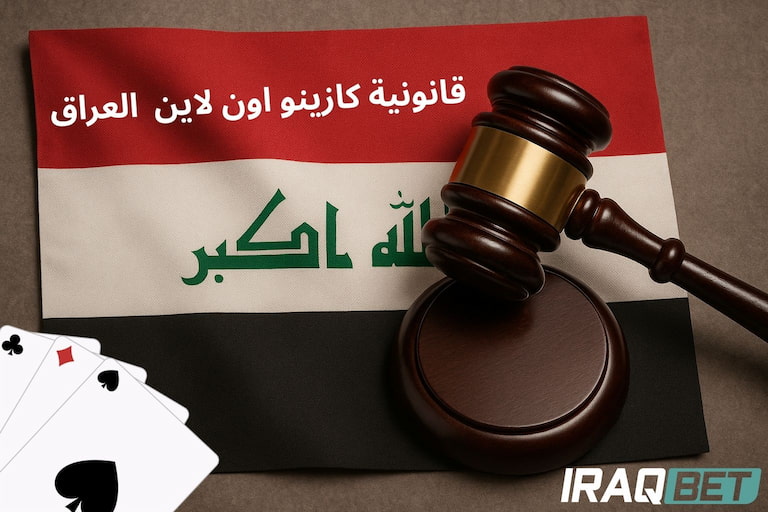
Gambling is generally prohibited in Iraq. The primary legal framework stems from the Iraqi Penal Code No. 111 of 1969, which prohibits games of chance and all gambling-related activities.
Article 389 of the law states: “Anyone who opens or manages a place for gambling shall be punished with imprisonment and a fine not exceeding 225,000 Iraqi dinars.”
For operators, this could mean both imprisonment (up to one year) and fines. For players caught gambling, the punishment is usually lighter—potentially a short jail term, sometimes as little as one month.
However, as in many Arab countries, there is no explicit legal text addressing online gambling. This legal gray area allows many Iraqi players to freely access and play on international online casino sites, typically without incident. Still, it is advised to take precautions—such as using a VPN, keeping activity private, and avoiding public play—to minimize risks.
VPN Use in Online Casinos in Iraq
Although land-based and online casinos are restricted under Iraqi law, players can still easily access international casino sites by using a Virtual Private Network (VPN). A VPN masks your location, bypasses geographic restrictions, and helps maintain privacy while playing online.
That said, there are a few important points to keep in mind:
- Always use a reputable VPN provider. Below, we highlight five of the most trusted services globally.
- Some online casinos explicitly prohibit the use of VPNs. Be sure to check the site’s terms before signing up.
Recommended VPNs for Iraqi Players
- ExpressVPN – Known for speed, reliability, and bypassing geo-blocks. Excellent for streaming and global access.
Servers: 3,000 | Countries: 105 | Price: $8.32/month
- NordVPN – One of the most popular VPNs worldwide, offering top-tier security and high-speed connections.
Servers: 7,400 | Countries: 118 | Price: $3.99/month
- Surfshark – Offers similar features to premium VPNs at a lower cost, making it ideal for budget-conscious Iraqi players.
Servers: 3,200 | Countries: 100 | Price: $1.99/month
- CyberGhost – User-friendly interface with a focus on privacy. Great for video streaming and torrenting.
Servers: 9,882 | Countries: 100 | Price: $12.99/month
- Proton VPN – Created by the team behind Proton Mail, it emphasizes security, transparency, and a strict no-logs policy.
Servers: 15,187 | Countries: 126 | Price: $10/month
Why We Don’t Recommend Free VPNs
You may have noticed that all the VPN services we recommend are paid. While there are hundreds of free VPNs available online, they often come with serious drawbacks that make them unsuitable for online casino play in Iraq:
- Unreliable servers – Free VPNs typically rely on virtual servers rather than physical ones in other countries, making it easier for casinos or governments to detect your actual location.
- Weaker privacy protections – Advanced features such as a kill switch (which disconnects your internet if the VPN fails) are usually missing, leaving you exposed.
- Slower performance – Free VPNs often have limited bandwidth and speed, resulting in lag and disconnections while gaming.
- Security risks – Many free providers monetize by collecting and selling user data, which undermines the very privacy a VPN is supposed to offer.
For these reasons, sticking with a reliable, paid VPN is the safer and more effective option for Iraqi players.
Casinos in Iraq: Baghdad & Erbil

Although a few land-based casino halls are operating in Iraq, they are not officially legal and therefore not considered safe. For Iraqi players, online casinos are a better alternative, offering a secure and high-quality gambling experience.
At Iraqi online casinos, you can find virtually any game you’re looking for, along with a wide variety of safe and convenient payment methods. On top of that, these sites often provide generous bonuses and promotions, giving you the chance to boost your winnings while enjoying your favorite games.
Baghdad Online Casino
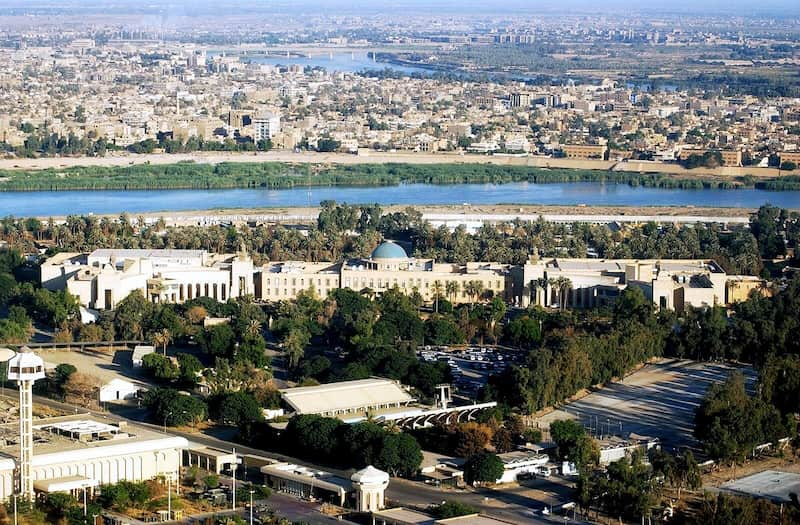
Iraq’s capital, Baghdad, is one of the most well-known cities in the country when it comes to gambling. If you’re a casino enthusiast in Baghdad, there’s no need to visit a land-based venue. With Baghdad online casinos, you can enjoy smooth and entertaining gameplay in a secure online environment. These platforms prioritize user privacy and discretion, helping players avoid any potential legal issues.
Erbil Online Casino

Baghdad isn’t the only place where players can enjoy online casino sites. If you’re based in Erbil, in northern Iraq, you’re just as fortunate. With Erbil online casinos, you can sign up at one of the trusted platforms recommended by our team of experts and start enjoying the best online casino games right away.
Sulaymaniyah Casinos
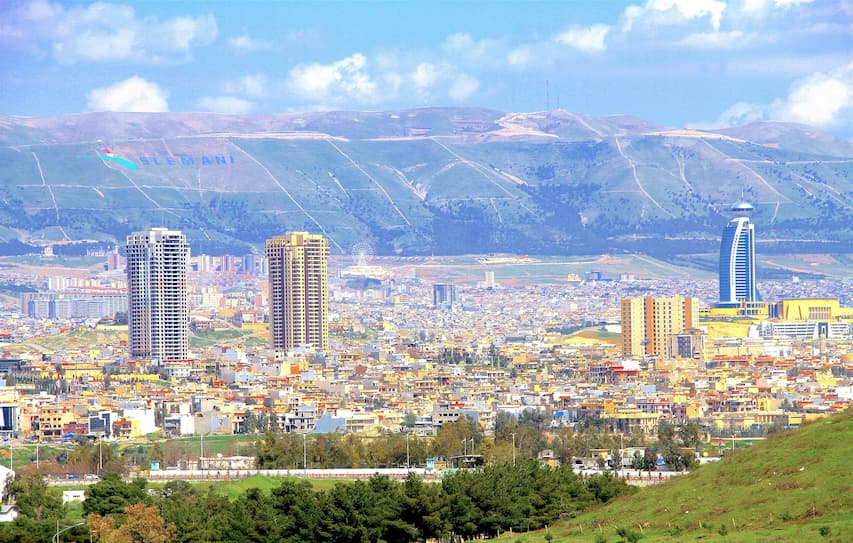
Sulaymaniyah is a border city in northeastern Iraq. While some cafés and nightclubs in the city may offer gambling, all land-based casinos in Sulaymaniyah are illegal. Anyone visiting them risks arrest and losing their money.
A safer alternative is to enjoy online casinos in Sulaymaniyah. These platforms give you access to a wide range of exciting games on your smartphone or tablet without risking your financial or personal data. On top of that, you’ll find generous bonuses and exclusive promotions that can boost your winning chances. Multiple global and local payment methods are also available for added convenience.
Duhok Casinos
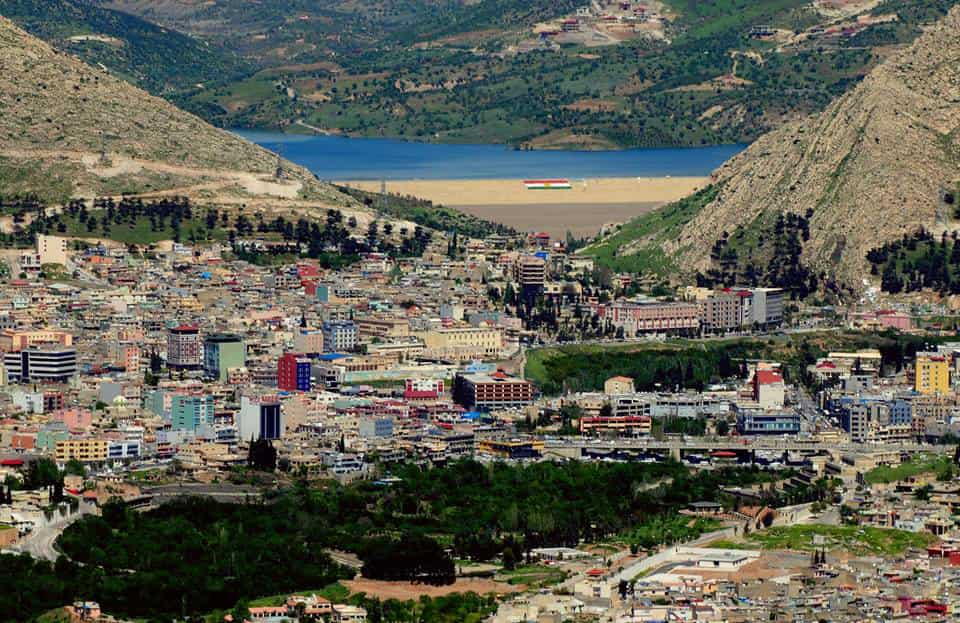
Duhok, situated within the Kurdistan Region of Iraq, has gained popularity as a tourist destination in recent years. Many café and nightclub owners have introduced gambling activities to attract visitors. However, both tourists and locals risk breaking the law by participating, which could lead to arrest at any time.
That’s why Duhok online casinos are the better choice. They provide a safe, fair, and entertaining environment where you can enjoy everything from slots to live dealer tables. In the live casino section, you can even interact with dealers and fellow players via live chat, bringing the excitement of an absolute casino right to your screen.
Land-Based Casinos in Iraq
Land-based casinos in Iraq offer visitors a premium entertainment experience, complete with top-class bars, luxurious restaurants, professional staff, and exclusive interior designs. Many of these establishments also feature elegant hotel rooms and outstanding entertainment programs, creating a truly immersive atmosphere.
Technically, land-based casinos are real, physical venues located in well-known areas where people can go to enjoy their favorite games and earn real money. However, Iraqi players who choose to visit these casinos need to be equipped with specific tips and information to fully understand the games and improve their chances of winning. While the experience is designed to be entertaining, most players also aim to walk away with a profit—something that can only be achieved by following innovative strategies and expert advice.
In general, land-based casinos offer players a vibrant setting and access to some of the most popular games worldwide, including poker, blackjack, roulette, and numerous other global favorites. The passion Iraqis have for their casinos is unmatched.
With more than 2,000 table games and 56,000 slot machines spread across over 100 legally operating land-based casinos, Iraq’s gambling and betting scene is both highly lucrative and incredibly dynamic for operators.
Statistics from 2010 clearly show that the average bet per adult in Iraq was around USD 200 annually, excluding winnings. Moreover, thousands of people are employed in this ever-expanding industry, which continues to grow stronger with time.
Differences Between Online Casinos and Land-Based Casinos in Iraq
There is no doubt that there are some luxurious and impressive land-based casinos worldwide, including in Iraq. On the other hand, online casinos have also become widely accessible. With continuous technological advancements, these platforms can now deliver a high-level gaming experience by partnering with the world’s top online casino game developers. In this section, we will explore the differences between online casinos and land-based casinos in Iraq.
| Feature | Land-Based Casinos | Online Casinos |
| Real gaming experience with professional dealers, real cards, and physical roulette wheels | ✅ Provides an authentic experience | ❌ Often more isolated and less exciting, live casinos offer the closest real-life experience |
| Ability to use strategies and tricks (e.g., basic blackjack strategy, card counting) | ✅ Can apply specific strategies | ❌ Some strategies don’t apply, e.g., bluffing in poker or card counting in blackjack |
| Accessibility | ❌ Requires traveling to another country, often in Europe | ✅ Accessible on your smartphone from your couch at home |
| Dress code | ❌ Must follow strict casino dress protocols | ✅ Welcomes players of all budgets with a fun and engaging experience |
| Cost of play | ❌ Often expensive for short gaming sessions | ✅ Offers new and loyal players a variety of bonuses and promotions, increasing winning opportunities |
| Fairness and security | ❌ You can be easily cheated | ✅ Licensed online casinos are regulated and fair |
| Game variety | ❌ Very limited selection | ✅ Thousands of games available |
Top 10 Tips for Playing at Online Casinos
Playing at an online casino is not very different from visiting a land-based casino when it comes to strategies and tricks, which vary from game to game and are essential for winning. Beyond game-specific strategy, our team of experts at Rihan Iraq recommends the following tips to ensure an enjoyable and safe online casino experience:
- Choose a licensed Iraqi online casino – Always play on regulated platforms for safety and fairness.
- Set a budget – Decide how much you are willing to spend before you start playing.
- Take advantage of casino bonuses – Utilize welcome bonuses, deposit bonuses, and other promotions.
- Play on your personal device – Stick to your smartphone, tablet, or computer for convenience and security.
- Try free game versions first – Practice on demo versions before wagering real money.
- Use payment methods suitable for Iraq – Prefer casinos that support local e-wallets and payment options.
- Control your gaming time – Set a schedule to avoid excessive play and potential addiction.
- Focus on high RTP games – Select games with a return-to-player rate of 96% or higher.
- Use a VPN if necessary – If a casino site is blocked in Iraq, a reliable VPN can help you access it safely.
- Stay informed – Continuously learn about game rules, strategies, and safe gambling practices.
Frequently Asked Questions – Online Casinos in Iraq
Is it legal to use an online casino in Iraq?
Iraqi gamblers can legally play at any online casino in Iraq.
Is playing at an online casino legal?
Yes, playing at online casinos in Iraq is legal. These casinos ensure the complete security of player data, and users can further enhance their safety by using a VPN.
Are there any legal land-based casinos in Iraq?
No, there are no legal land-based casinos in any Iraqi city, including the Kurdistan region. Visiting any casino or gambling venue in a café or other location could put you at risk of breaking the law.
Are there strategies I can use to increase my chances of winning in online casino games?
Yes! There are several strategies you can apply, such as card counting and basic blackjack strategy. You can also use different roulette strategies, including Martingale, Reverse Martingale, Fibonacci, and James Bond systems.
Can I withdraw my winnings from an online casino?
Absolutely. The primary purpose of gambling is to win real money. Online casinos offer multiple withdrawal methods, including bank cards, wire transfers, and e-wallets, which are particularly convenient for Iraqi players.
Are online casinos in Iraq trustworthy?
Iraq is one of the strongest online gambling platforms in Iraq and the Arab world. Its long-standing history and initiatives to improve the gambling industry ensure that the online casinos listed on the platform are 100% reliable.

